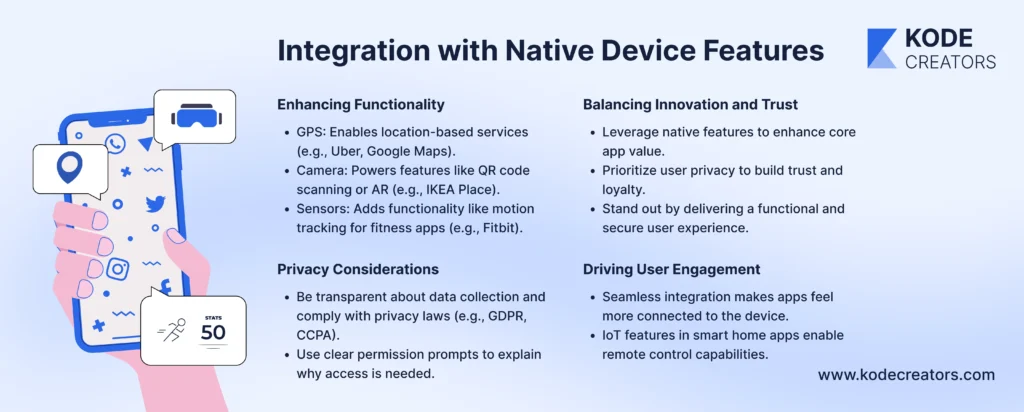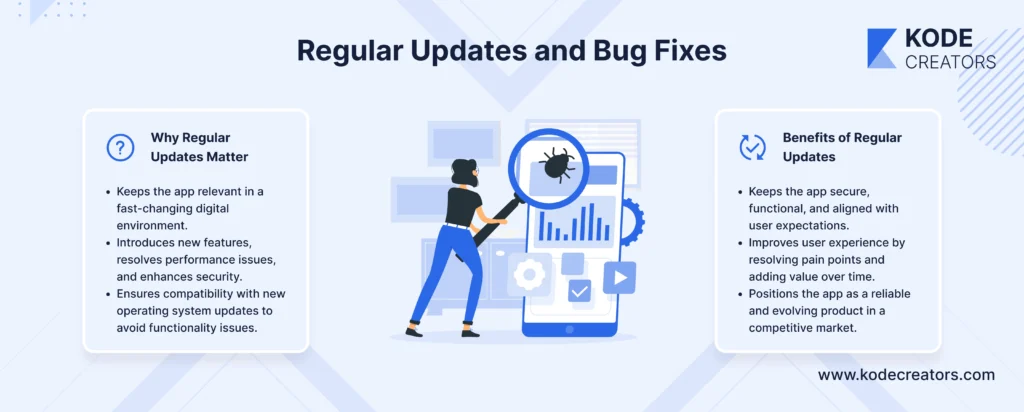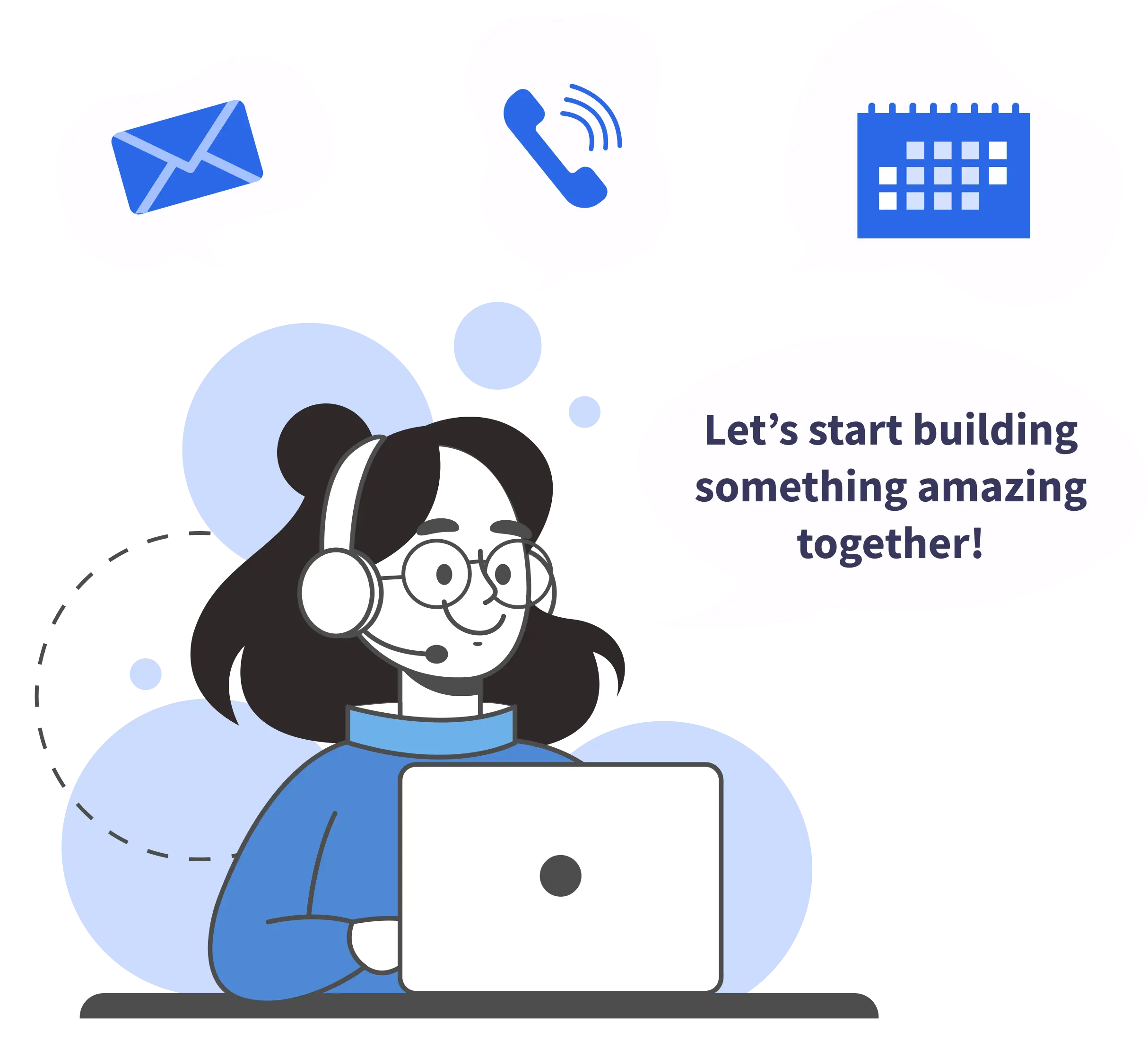Developing a mobile app that draws attention in the new year needs more than a fresh concept - it requires the right features that match modern user demands and tech innovations. Users now expect apps to work well, feel natural, stay safe, and fit their personal needs. Meeting these needs can help you get more downloads, keep users around, and succeed in the long run.
In this post, we'll go through the top 10 features any mobile app needs to do well in 2025. From using AI to make smarter user experiences to keeping data safe and sound, these tips will help you build an app that clicks with your audience and stays ahead of other apps. Let's get started.
10 Features Every Mobile App Should Have
If you're building or updating an existing app, here's a list of 10 essential features you should include. In order to begin with, we've got seamless UI/UX.
1. Seamless User Interface (UI) and Experience (UX)
A seamless UI/UX is the backbone of any successful mobile app, meaning users will be able to navigate and interact with an app without any hassle. Indeed, studies have proved that 88% of users are unlikely to return to an app after having a bad experience, which means intuitive design plays a vital role in user retention. A good balance between aesthetic appeal and functionality in the interface provides an attractive look to the environment without sacrificing usability.

To achieve this goal, the design should be minimalist and clear. Don't overwhelm users with clutter, or even complicated navigation across different parts of the screen. A clean design lays out all the elements in a clear, well-thought-out flow. Consistency in typography, color scheme, and icons will guide the user through an application with a natural flow. Ensure it is responsive to provide smooth transitions while moving from one page to another or performing any action.
Test your app regularly with real users to see how they behave and find any tricky spots. Apps like Figma and Adobe XD can help you mock up and fine-tune designs before you build them. When you put effort into making your UI/UX seamless, you don't just make users happy - you also boost your chances of getting good reviews and people coming back to use your app again. This focus on design can make your app stand out in a market where there's lots of competition.
2. Personalization and Predictive Analytics
AI-powered personalization and predictive analytics are changing how mobile apps interact with users. These technologies look at user behavior, likes, and interactions to create custom experiences. Salesforce did a study that showed 65% of users think brands should change their experiences so personalization is a must-have for modern apps.

Spotify and Netflix show predictive analytics at work. Spotify's "Discover Weekly" playlist looks at what you listen to and suggests songs you might like. Netflix picks shows for you based on what you've watched before and what you enjoy. These personal touches make users feel connected, which keeps them using the app and coming back.
To add a personal touch, begin by gathering useful information through sign-ups tracking what users do, and asking for feedback. Use AI to spot patterns and guess what users need, like showing them stuff they'll like or making the app experience better. Be open about collecting data and ask users if it's okay to build their trust.
When you personalize your app's experience, it can lead to user satisfaction and always make users come back. Just figure out what they really want, your app can go from being just useful to something they can't live without.
3. Biometric Authentication for Enhanced Security
Biometric authentication has become an essential part of mobile apps giving users top-notch security and ease of use. Apps can now replace old-school passwords with login options like fingerprint scans, face recognition, or even eye scans. Passwords are often forgotten or stolen, so this is a big step up. A recent report shows that 81% of smartphone users worldwide use biometric authentication on their devices.

This feature makes users trust apps more. Biometric data is unique to each person, unlike passwords, so it's harder for someone else to get in. It also fits with tough data protection laws like GDPR and CCPA. Many biometric systems keep data on the device itself, not on outside servers, which cuts down on risks.
Apps like PayPal and Google Pay use biometrics to secure money transfers giving users a sense of security and easy access. Adding these features to your app shows you care about user safety especially if it handles sensitive info like banking, healthcare, or online shopping.
When you add biometrics, make sure they work with common devices and ask users for permission. This helps you gain trust while providing a smooth safe experience for users.
4. Dark Mode and Theme Customization
Dark mode has become a popular feature in mobile apps, with many users favoring this option for its visual and practical advantages. Research indicates that dark mode can lessen eye strain when used at night, enhancing user comfort during long periods of use. Also, dark mode helps save battery life on devices with OLED screens, because it uses less power to show darker pixels.

Theme customization has an influence on user satisfaction and engagement by letting people personalize how their apps look. When users can pick their favorite themes, colors, and modes, apps meet individual likes and build a stronger bond. For example, apps such as Twitter and Slack offer many ways to customize allowing users to switch between light and dark modes and change interface colors to match their style.
To add these features, developers need to design interfaces that adapt smoothly to different themes without making them harder to use. It's also key to enable automatic switching based on system settings giving a more unified experience. By focusing on dark mode and theme customization, your app not only keeps up with a growing trend but also improves user satisfaction and makes it easier to use for more people.
5. Cross-Platform Compatibility
Nowadays, cross-platform compatibility plays a key role in reaching more users. When you support platforms like Android and iOS, your app can connect with almost 99% of mobile users worldwide. Also, new platforms are gaining popularity such as foldable devices and wearable tech. Making your app compatible with these newer technologies shows you're thinking ahead and planning for the future.

Using frameworks like Flutter or React Native gives developers the ability to build apps with a uniform user experience on different devices. These frameworks let developers create a single codebase that runs on multiple platforms, which cuts down on development costs and time. For example, apps like Google Ads and Alibaba use Flutter to keep high performance and a consistent design on Android and iOS.
Apps that work on multiple platforms not only become more accessible but also keep users coming back by offering a steady experience. Making sure your app runs without issues on various devices, including tablets and smart TVs, prepares it for the changing tech scene. By using modern frameworks and testing on different platforms, you can create an app that meets the needs of a wide range of users who expect a lot.
6. Push Notifications and In-App Messaging
Push notifications and in-app messaging can boost user engagement, but they need smart use to work well. timed or general notifications can annoy users making them remove the app. But messages that feel personal and matter to users can make engagement jump by 80%, as a study shows.

Personalization plays a crucial role. Apps like Duolingo and Amazon stand out in their use of push notifications to get users back on board with reminders that match their habits. Take Duolingo, for example. It sends uplifting messages about language lessons you've skipped. Amazon, on the other hand, draws attention to items still in your cart or introduces price cuts on products you've shown interest in. In the same way, messages within the app—like welcome notes, updates about new features, or guidance for new users—make the experience better by giving you the right info at the right time, based on what you're doing.
To find the sweet spot, split your users into groups based on what they like where they are, or how they've used your app before. Apps like Firebase or OneSignal can help you plan when to send notifications and figure out the best times to reach people. Keep your messages short, clear about what to do next, and let users choose if they want to get them. This way, notifications and in-app messages can make users more loyal, stick around longer, and keep your app fresh in their minds.
7. Generative AI Features
Generative AI is revolutionizing mobile apps by enabling dynamic features that enhance user engagement and streamline workflows. Tools powered by AI, such as chatbots, personalized content generation, and intelligent suggestions, cater to user needs in real-time. For instance, generative AI can craft tailored product recommendations or generate personalized workout plans, making the app experience more interactive and user-centric.

Chatbots like those powered by OpenAI’s GPT or Dialogflow provide seamless customer support, answering queries, and guiding users with human-like interactions. Apps like Snapchat use generative AI for creating filters and personalized augmented reality experiences, while platforms such as Headspace offer AI-generated meditation suggestions based on user moods and preferences.
The integration of generative AI doesn’t just enhance engagement but also streamlines backend workflows. For example, content-heavy apps can automate tasks like writing descriptions, creating summaries, or drafting emails, saving developers and businesses significant time and resources.
To implement generative AI features effectively, focus on areas where personalization and automation add genuine value. Use AI responsibly by being transparent about data usage and ensuring compliance with privacy standards. By adopting these tools, you can elevate your app’s utility and position it as a cutting-edge solution in a competitive market.
8. Integration with Native Device Features
Integrating native device features such as GPS, camera, and sensors can elevate your app’s functionality, creating tailored and immersive experiences for users. For instance, GPS integration enables location-based services like ride-sharing apps (Uber) or navigation tools (Google Maps). Similarly, the camera can power innovative features like QR code scanning or augmented reality (AR) experiences, as seen in apps like IKEA Place, where users visualize furniture in their homes using AR.

Beyond functionality, these integrations drive user engagement by making the app feel seamlessly connected to their device. Health and fitness apps like Fitbit leverage motion sensors to track steps or workouts, while smart home apps use IoT sensors for remote control capabilities. However, with such access comes the critical responsibility of maintaining user privacy.
Privacy considerations are paramount when accessing native features. Developers must be transparent about data collection, ensuring compliance with laws like GDPR and CCPA. Implementing permissions prompts that clearly explain why access is needed fosters trust, and storing sensitive data securely minimizes risk.
When leveraging native features, focus on enhancing the app's core value while respecting user preferences and privacy. This balance ensures functionality without compromising user trust, setting your app apart in an increasingly competitive market.
9. Regular Updates and Bug Fixes
Updating your mobile app regularly and fixing bugs plays a key role in its success. Taking care of your app before problems crop up keeps it fresh in a fast-changing digital world. Frequent updates don't just add new features; they also sort out performance issues, boost security, and keep up with new operating system needs. Business of Apps reports that apps with frequent updates see much higher user retention rates compared to those that don't update as often.

Matching updates with user feedback makes sure these changes are well received by your audience. Tools like Google Analytics or surveys in your app help you learn about how users act and what they like. For instance, adding a feature people asked for or fixing something many users complain about shows you listen, which builds trust and keeps users coming back. Apps like WhatsApp do this well often putting out updates based on what users want while fixing any security problems.
When you plan updates, make sure to test them so you don't create new problems. Tell users about the changes in your release notes so they get why the update matters. If you stick to regular updates and use feedback to guide you, you can keep your app secure, working well, and in line with what users expect.
10. Robust Data Security Measures
As we rely more on mobile apps, keeping data safe has become a must for users and developers. Using good methods like encryption safe APIs, and regular security checks is key to guarding user info from attacks. Apps that don't put safety first can face big problems, from monetary fines to lasting harm to their name. For example, the 2021 Facebook data breach exposed the personal information of over 500 million users showing how crucial it is to have well-tested cybersecurity.

When you're open about how you use data and let users control their personal info, your app lines up with these rules. Adding things like fingerprint logins and two-step verification (2FA) makes users trust you even more by keeping their sensitive data safe.
The focus on cybersecurity has a real-world impact that goes beyond just following the law. It builds a loyal user base that trusts your app to be reliable. To keep your app strong against new threats and secure its spot in a tough market, make sure you update security measures, run tests to find weak spots and teach users how to stay safe. This helps your app stand up to changing dangers.
Conclusion:
The path to building a superhit mobile app in the new year centers around adding user-friendly and cutting-edge features like personalization, Gen AI, and of course, robust privacy and security. If you focus on what user needs and use tech well, your app is definitely going to win big over time. Stay flexible and keep working to improve the user experience, and your app will keep growing no matter what the market size is.












